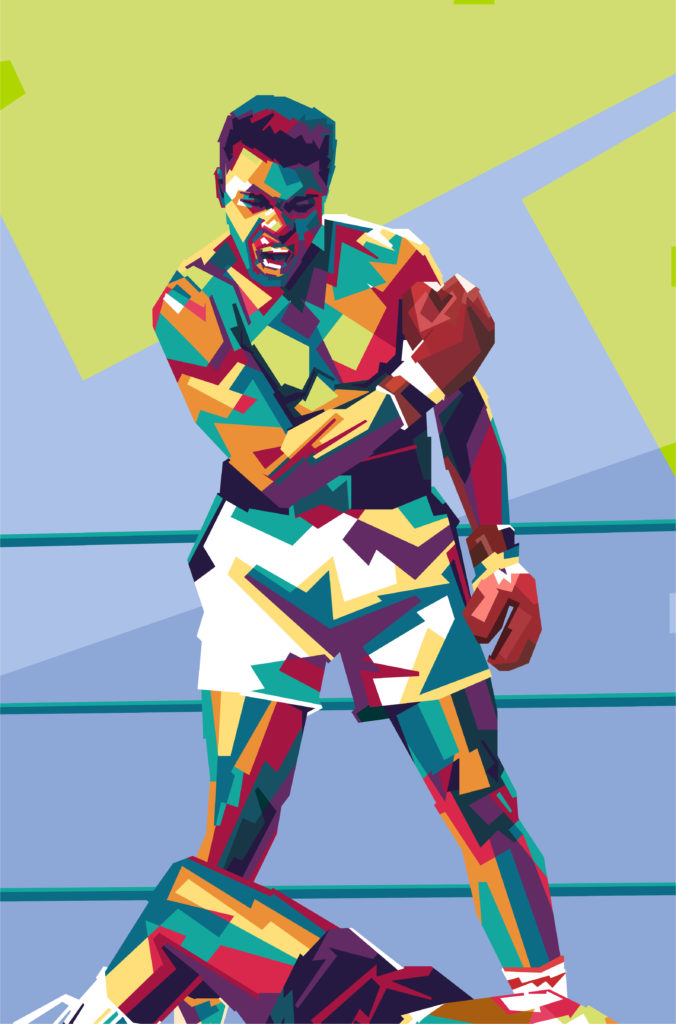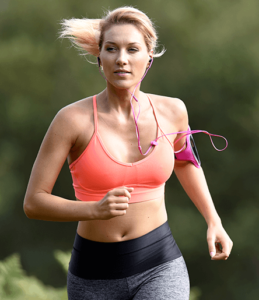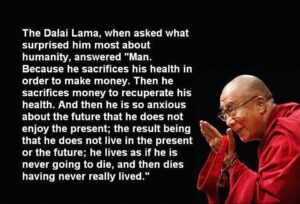Is knee pain after running, slow you down? Are you having to take breaks and only to have it flare up again? Are you frustrated because you are doing what you think you should be doing for preventive and corrective exercises, but it still keeps coming back? Well, you’re not wrong. You’re just missing three parts of your body that are very important to make sure you don’t have knee pain after running.
I am on a mission to show people that there’s a better way to train and treat your body. That’s commonly found in life. It’s a very a specific, targeted, holistic way to train and treat all the different areas of your body so that you function at your best, which means that you have no pain, you move freely, you can keep going with the activities that you love and workouts that you love to do. You can stay active and play with your family.
So, if you like the content here, please subscribe, and then don’t forget to hit that bell, so you’re notified when new videos come out.
The why on knee pain after running
Getting that pain in your knee during or after a run is super frustrating. It seems to come out of nowhere. All of a sudden you feel good, now you don’t feel good. Why is it?
Well, there’s a lot of different factors, but once it happens, you go through your acceptable ways of taking care of it. Ice it, maybe do some foam rolling, maybe do some PT, take some anti-inflammatories and pain meds, all the above, just stay off of it.
And it may help a little bit, but ultimately, more than likely, it’s going to come back. That’s because your focus was to get rid of the pain, not correct why it’s having the pain. Running is part of the issue.
Unless you had some sort of trauma happen to your knee, falling down, getting hit, some weird twerk when you’re running, something like that, more than likely it’s an overuse type of an injury.
Now that overuse injury could have been happening for decades, and now it leads to the more acute. But generally you want to make sure that your… This is your Patella, your kneecap and this is your Femur, your leg bone.
Generally, you want to run nice and even, the Patella over the Femur, with some space in between. That’s how you want your knee to move. But over time, unless you go out and correct those issues or prevent those issues by doing some sort of exercise and therapy, eventually that Patella is going to slowly get closer to the Trochlea, you have less padding left, less liquid.
And then also if your quads aren’t balanced properly, if it’s the outside of the thigh, this is the inside thigh, your Patella’s going to start to move more to the outside.
There’s a lot of different names to this Patellofemoral Syndrome, Chondromalacia, you could hear by lateral checking of your Patella, arthritis of your knee, a lot of different names from basically kind of the same thing. Okay? The main thing you want to know is that, how do I stop it from going. I want you to understand how dynamic running is. Running or any type of ambulatory movement, walking, jogging, whatever uses a lot. It uses your foot hitting to the ground, front part of your shin, back part of your shin. It uses your quads, your hamstrings, the front and back part of your thigh. It uses your Pelvis in your SI joint, is your spine, is your shoulder girl.
There’s a lot going on when you run. And running produces a lot of force through your body. An example of, just walking, if you’re just walking and you’re about average weight and you’re doing your 10,000 steps per day, that’s several tons of force that go through your body, tons with a T. So when you run, multiply that by your force, how tall you are, weight, all that fun stuff. Basic point is you got a lot of stuff going through your body. And if it doesn’t flow through your body, from the step to the kick, to the movement of the arms, it’s going to stop in weird places. And if those muscles, tendons, ligaments, and more importantly, the fascial chains are not lined up. Those forces move incorrectly, right? So it’s like a car that’s out of alignment. You can drive a car that’s slight out of alignment, but the more you drive it, the more it goes out alignment, the worse your tires get.
It’s the same thing with your knees. Are you struggling with knee pain after running? Do you have Runner’s Knee? Are you trying different solutions, but not getting sustained results? Give yes or no for both parts in the comments. So first or foremost, you want to make sure you take care of your body specific to running. Before you run, you want to have some sort of warmup. You want to warm not only your Cardiovascular system up and your Circulatory system up, but you want to warm up the areas of your body, that your body use. Ankles, knees, hips, and spine. A warmup is a constant activity that you do to basically wake up your body and get more importantly, get the fluids in your body, more liquid and less viscous so they can transport nutrition, take away the bad stuff and your function properly. So you want to stretch those areas and keep it working properly.
That’s going to include some sort of stretching. Myofascial is my preference. The shins, the interparietal, your calves, your soleus, your three hamstrings, specifically your biceps femoris, your deep rotators of the hip, specifically the obturator externus, or maybe the piriformis, your glutes, more specifically probably your glute max, but also your spine. Because as you walk and run, your tension between your upper limb and lower limb is right through your trunk. So you want to make sure you warm your body up and then also you want to normalize it or do some stretching afterwards. So now when you go through your body, it needs to be addressed specifically. Don’t just go online or Runner’s Magazine or some random YouTube video and show you the stretches you’ve seen for the past three decades. There’s a better way. Your body has a lot of different lines of force.
You must be specific in training you knee to get out of pain
And for you too, use your body specifically. You have to follow these lines of force. A good example is stretching your calves. Generally, this is seen as step put on your foot on a step and let your heel hang down or just put in one foot behind the other and push your foot to the ground. There’s a problem for that. One for the first one, when you let your foot just hang off a step, those same muscles that you’re trying to stretch, the gastrocnemius of calves, are now also supporting you because you have no fixed point, because your heels not touching anything. Unless I have a fixed point on the ground, that’s solid, I can’t pull or push or do anything because I have no area to focus on. So for the calf, we know you have two calves, right? You have a lateral calf and a medial calf.
So to stretch that specifically, either turn your foot in for lateral, out for medial. Then you want to make sure that chain is under tension, which means pull your toes up, lock your knee, tuck it powers, get tough through your spine and then reach that same side arm up. Now you’re not only stretching one of those two calves, but you’re stretching a chain that’s involved. That’s the most effective way to stretch. You can do that for all your muscles. I don’t want to get into every single muscle, but that’s how you start thinking about it. That’s why I’m talked about at beginning, there’s a more specific, holistic way to address your body. I’m going to give you an example of a person. So I had a lady who was a runner and she did her running routine. She got her routines from Runner’s Magazine or track coach.
And they did those basic stretches that you see, everybody has a pull your leg up and throw your leg on something and lean forward or whatever else they do, right? Those aren’t enough. And they’ve done it the wrong time. Because usually they do it before the run, which is absolutely not what you want to do. You want to do your stretching afterwards or warm up before. She came in with knee pain, it was Patellofemoral Syndrome or Chondromalacia.
That simply means that her knee kept us running over top of her thigh. It is not a big mystery as to what to do. You need to stretch that quad muscle and pump up the fluid underneath the knee through some specific exercises, which I’ll get to in a little bit more. After she did that for about three months, her knee pain completely went away. But more importantly, she told me… She was about my age, about 49 at the time. She got out of bed feeling younger than ever. She wasn’t feeling like she was some crippled old woman anymore. All right. For argument’s sake, let’s say you’re taking care of your body, you’re very, very specific of all the areas that you need to work on but you’re still having issues at your knee.
The 3 areas you need to train for knee pain
That’s because you’re missing the three most important areas. Your Patellofemoral Joint, your VMO and your Articular Genu.
Patella Femoral joint
Your Patellofemoral Joint is a joint between your Patella, your knee cap, and your femur to form the Patellofemoral Joint. Like all joints, it needs to be awake and it needs to be fluid. It needs to be awake because it communicates to your spine and brain through effort signals to understand how your knee is moving and what’s going with the rest of the body. It needs to be fluid because of the synovial membrane, the synovial fluid with inside, it needs to be able to move properly, to allow for proper range of motion and also to allow for proper waste removal and nutrition brought in. Like all joints, in all years of body, it can be trained.
There’s an exercise for that. You need to train the Patellofemoral Joint in some sort of balance type exercise, but you need to make sure that the Patellofemoral is doing the work, not your other tendons and ligaments, muscles, what have you. So you need to put yourself in position so that it does the majority of the work to keep yourself balanced, telling your brain, “This joint needs to work to help me do this job”. So when a Patellofemoral Joint is awake in doing its job, it communicates to the brain spinal cord, to tell it, “I need the need to move properly along the trochlea of the femur”. This is how it should move. If it’s asleep, it just kind of starts moving towards being pulled. So to have that joint move properly, you need to have the joint awake.
VMO(Vastis Medialias Oblique)
So your VMO is part of your quad complex.For argument’s purposes, we’re going to talk about the six quads not the four, that you need to be concerned about and that can cause issues when you’re running. So your VMO stands for your Vastus Medialis Obliquus. It’s part of the VML, but it stops and takes a quick turn dangling to insert towards your kneecap. So if your VML, which is Vastus Medialis Longitudinal, your VMO, Vastus Medialis Obliquus, your Rec fem, vastus laterals, vastus intermedius, articular genu. Almost all those quads, will pull your kneecap to the outside when walking or running. The VMO is the only one where it’s job to say, “No kneecap you stay in place so that when that Patella runs over the trochlea, it runs over properly”, because it’s in place. It’s holding it, stopping it from going too far to the outside. It does that through the direction of fibers. And also because there’s separate innovation in that area to tell that VMO to do its job and to keep the Patella aligned.
So while the joints working properly, you also need the VMO to hold it in place so that kneecap runs over trochlea nice and smooth. So to strengthen your VMO, respecting the oblique orientation of the direction fibers, you can’t do what’s properly found on the interweb. There’s an exercise where they have you pulling your leg up and out to work the VML, thinking that’s the same thing as working the VMO, but it’s not. You can just simply look at the fiber directions of the VML and then fiber directions of the VMO and see that it takes a different type of action. This action is kind of like a soccer kick. So that’s where you see soccer players have gigantic quads on the inside, that’s their VMO. But you can do that on your own through some sort of resistance band or somebody put their hand on your foot and do a simple soccer kick.
Articular Genu
Your articular genu means articular to movement, genu means knee. It help to move the knee. It is deep on your thigh, almost a continuation of that Vastus Intermedius and it connects to the synovial membrane underneath the kneecap. If you remember from the top before with the Patellofemoral Joint, that synovial membrane is very important to be mobile and to produce the synovial fluid, to help with waste removal and to bring nutrition. With articular genu if it’s inflexible or if it’s strong, it doesn’t help pump that synovial area to produce the movement as it produce in the synovial membrane. You won’t find any exercises on internet about the articular genu. But like all exercises structures, there needs to be a fixed point. So you need fix the kneecap, because it attaches underneath the cap, and to flex the articular genu only, not all of your quads, to makes you stimulate those fibers to either strengthening through reps or stretching through holding for three times 30 seconds.
There you go. Those three really small but important areas and how they should be incorporated into your corrective preventive recovery routine. Remember you’re not going to be helping your knee by the rest of your body, when you do the exercises and keep your knee healthy. It’s going to keep you active. There’s also going to keep you in life because we’re only as strong as our weakest link. And if our knee is the weakest link, then our need is going to hinder us in everything we do. Not just running, just in life, playing with your kids, going to the grocery store, wherever have you, it’s going to slowly become the bane of your existence but you can stop that by training it properly.
If you’re interested more in how to train yourself properly, to get mobile, to get out of pain and get back to the activities that you love, then I’ve got a free resource for you. In the description below, there’s a link on how to access it. Click the link, put in information and you’ll get instant access. Stay tuned for this next video on how to stretch for mobility. Please don’t forget to subscribe and hit that bell. And if you found this video beneficial, please like and share. That way the YouTube algorithm will share with more people who will also find it beneficial. Please remember it’s not just working out, it’s opportunity to build a foundation for a better life.
Let me know your thought below.
it’s not just working out, it’s building a foundation for a better life.
Find out more @




